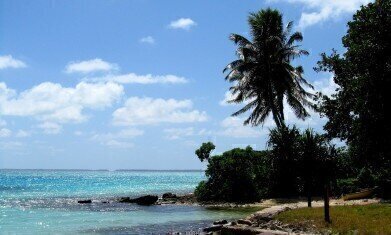Air Monitoring
Which Countries Produce the Least Emissions?
Nov 24 2021
The recently created Glasgow Climate Pact, which was signed by 197 nations at COP26, and the strong interest in the upcoming CEM Conference in Krakow in March, are key indicators that governments around the globe are finally waking up to the huge threats posed by climate change. However, some of them need to take action more urgently than others.
In a cruel twist of fate, it is the countries who have contributed least to global warming who are likely to suffer the harshest consequences of its onset. This refers largely to low-lying island nations, as well as impoverished parts of Africa, the Americas and Asia which are already experiencing extreme temperatures and unpredictable weather events.
Countries with the lowest carbon footprint
The following leader board consists of the 10 countries with the lowest emissions as defined by the Electronic Data Gathering, Analysis and Retrieval system, known as the EDGAR database. This database was first established in 2018 by the European Commission in partnership with the Netherlands Environmental Assessment Agency, who are specialists in capturing the evidence of weather impact and climate change. According to their findings, the nations with the lowest carbon footprint are as follows:
- Kiribati
- Vanuatu
- Dominica
- Tonga
- Solomon Islands
- Samoa
- Saint Vincent and the Grenadines
- Comoros
- Saint Kitts and Nevis
- Grenada
It should be noted that several territories, principalities and other self-governing states were omitted from this list due to their affiliation with larger countries who produce more emissions. The British Overseas Territories of Anguilla, the Falkland Islands and the British Virgin Islands fall into this category, as do the Cook Islands (New Zealand), the Faroe Islands (Denmark) and Saint Pierre and Miquelon (France), among others.
The most environmentally friendly countries
It’s notable that all of those countries are island nations, located either in the Pacific, the Caribbean or the Indian Ocean. They all have small populations and rely on tourism, fishing and other non-impactive industries which don’t result in excessive emissions for their economic stability. Nonetheless, this does not mean that they are necessarily the most environmentally friendly places on the planet. For example, the Pacific island nation of Niue has one of the lowest cumulative greenhouse gas emissions in the world, but one of the highest per capita.
Instead, many of the most eco-friendly countries are actually wealthy and developed nations in the west, who have poured significant resources into renewable energies and other sustainable practices. Nordic nations like Denmark, Sweden, Finland and Norway perform strongly here, as does the UK due to the exemplary standards and methods for environmental monitoring in the country. Other strong performers include Luxembourg, Switzerland and Austria. It’s interesting to note that 20 of the top 25 countries in the world according to the Environmental Protection Index (EPI) are located in Europe.
Digital Edition
AET 28.2 April/May 2024
May 2024
Business News - Teledyne Marine expands with the acquisition of Valeport - Signal partners with gas analysis experts in Korea Air Monitoring - Continuous Fine Particulate Emission Monitor...
View all digital editions
Events
Jul 10 2024 Birmingham, UK
Jul 21 2024 Cape Town, South Africa
Australasian Waste & Recycling Expo
Jul 24 2024 Sydney, Australia
Jul 30 2024 Jakarta, Indonesia
China Energy Summit & Exhibition
Jul 31 2024 Beijing, China


















